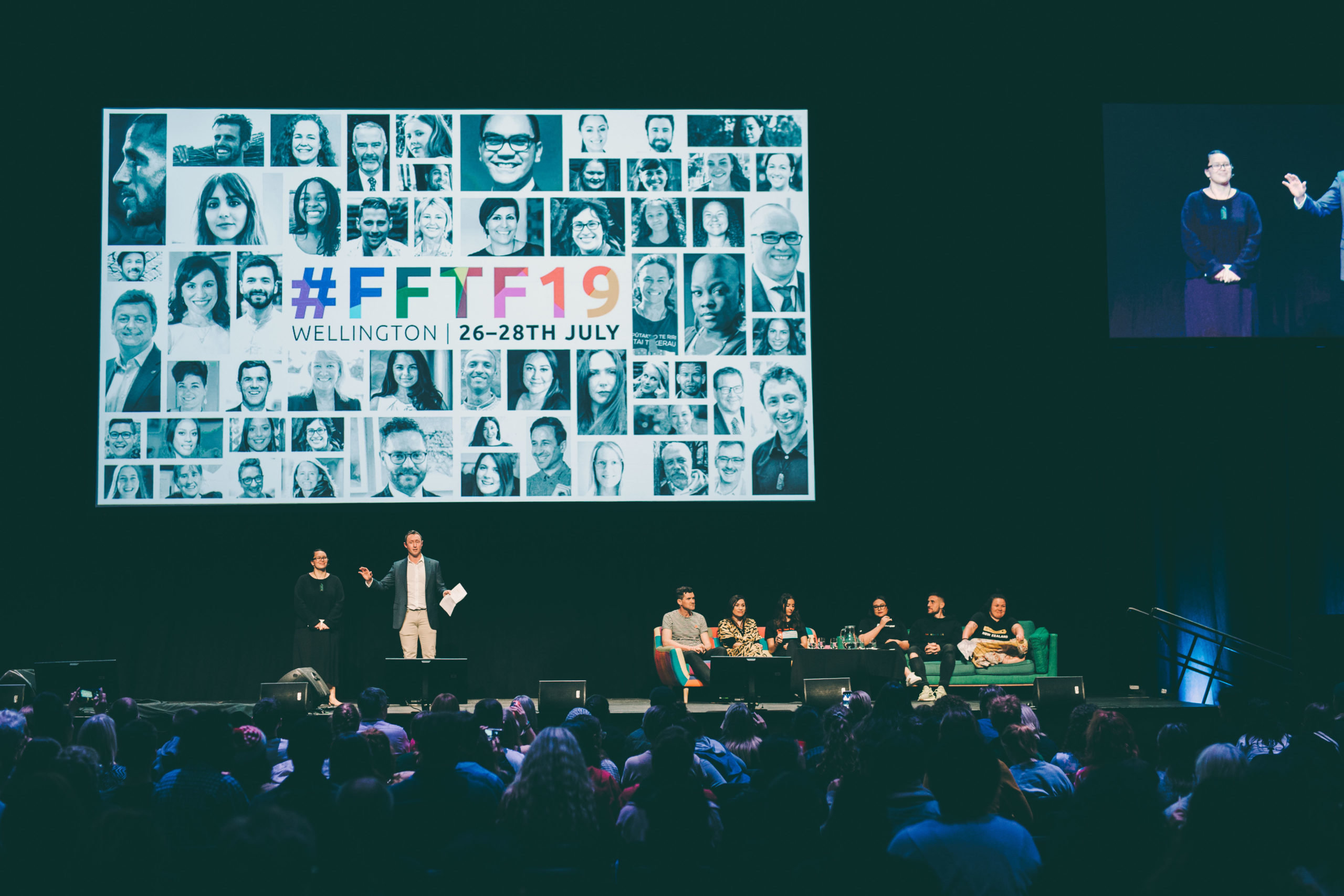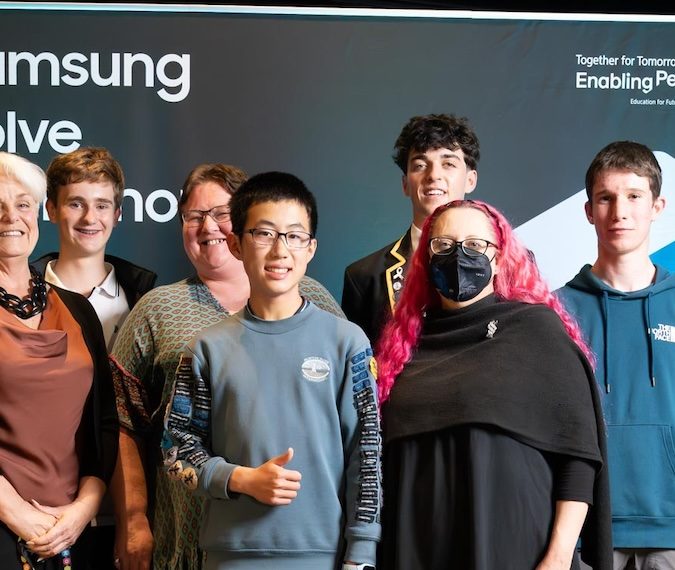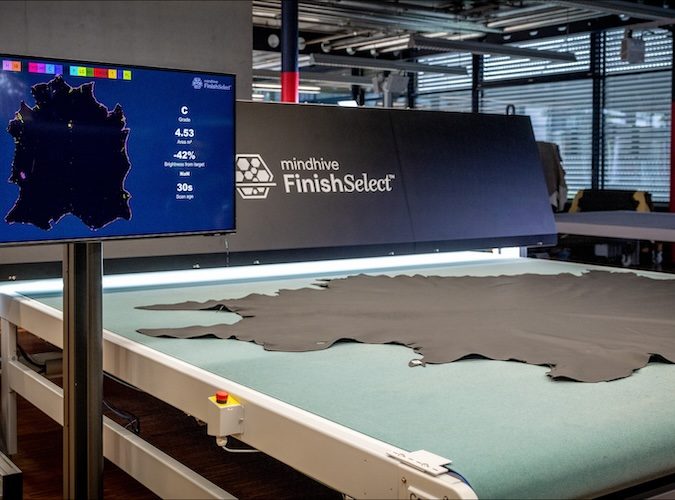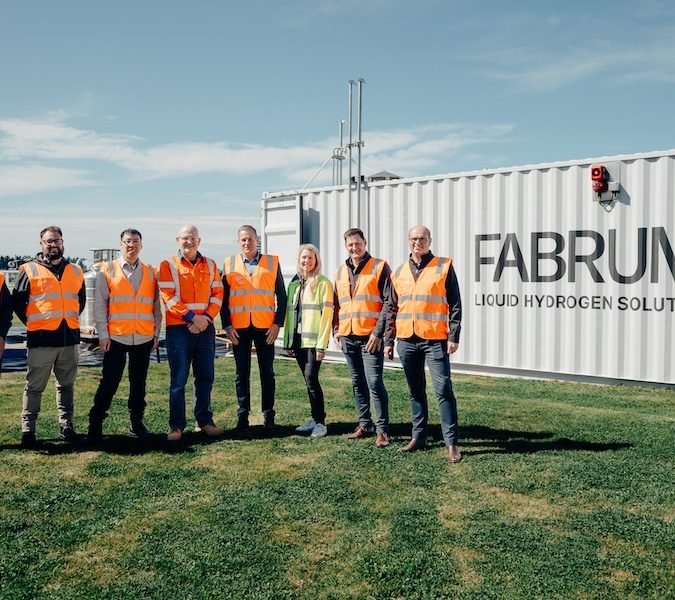Re-imagining a better world: how eight organisations are using design to achieve social impact

Credit: David Olsen Photography. Foundation North’s G.I.F.T Mauri workshop at ŌRĀKEI MARAE – NGĀTI WHĀTUA ŌRĀKEI.
In the world of social innovation everyone needs to embrace a designer’s mindset. Judith Thompson and Jade Tang-Taylor profile eight innovative initiatives using design to achieve social impact.
Designers are increasingly interested in leaving the world a better place than they found it. And, increasing numbers of people across a diverse range of backgrounds are adopting design methods to create social impact. This dual effect of designers broadening their scope into the social arena and social practitioners looking for new ways to collaborate and create more effective solutions, is leading to design becoming a go-to tool for social innovation.
Design for social innovation is not a new discipline but it’s gaining currency as an important way in which contemporary design can create sustainable impact beyond better products and services. Essentially, design for social innovation is about designers working at a systems level change. It’s about using design to reach across diverse groups of professionals to integrate skills. It’s about shifting service users from the margins to the centre of solution finding. It’s about going beyond meeting social needs in order to create new social relationships that enhance everybody’s capacity to take action.
Solving complex social problems is tough and despite best intentions, services can make vulnerable people more marginalised. Lifewise had been providing a night shelter and soup kitchen to help the homeless in Auckland for many years, but as the numbers of people sleeping rough and in emergency housing started to dramatically increase, they knew they needed a different approach. Including leaders from the rough sleeper community in the multi-agency design team was key to re-thinking homelessness.
For Be. Lab, as rapid technological advancement and AI opens up new possibilities, they believe moving from designing for to
designing with people with access needs, is the only way to create break-through innovations in accessibility.
Design for social innovation also broadens the designer’s role, shifting the perspective from service design which tends to focus on creating better interventions, to systems design, which seeks to understand the social systems underpinning issues of disparity and marginalisation. But complex problems require complex collaborations, bringing people from diverse disciplines and perspectives and people with lived experience into a working relationship. This is often where things fall apart. Good Health Design realised when people from different disciplines come together, they need better support right at the start of a project. Their research led to the creation of ‘initiate.collaborate’. It’s a toolkit based around a card game that is fun and brings people together to think more critically about what makes for effective collaborations – at the start of a project, not the middle or the end when it’s often too late.
We find design is at the centre of social innovation because at their core, social problems are design challenges. To be effective, the expertise and mindsets of designers are needed, diverse perspectives are needed and new tools to make collaboration a reality are needed.
We spoke with social innovators working across the spectrum of social issues. From inclusivity to philanthropy to amplifying the voices of youth, these people and their organisations are using design to create new forms of leadership and re-imagine new social relationships.
So, what’s already happening?
Well, turns out there’s a lot already happening in Aotearoa. Eight social innovators tell us why embracing a designer’s mindset is important to achieve social impact.

Auckland Co-Design Lab Based in South Auckland, the Auckland Co-design Lab is a joint initiative between eight central government agencies and Auckland Council. Set up in 2015, the Lab was established to develop fresh ideas in response to complex social issues. A key goal is to create a space for multi-agency teams to collaborate and experiment, working alongside citizens to broker innovative responses that better serve community wellbeing and using design-led practice to empower the people closest to the issues. The Lab builds practice-knowledge about innovation in complex settings through live projects and shares and amplifies that learning through capability building within the public sector, creating open source resources and tools to spread the principles and practice of co-design.
“Design mindsets for me boils down to cultivating a ‘learning orientation’ – for people, teams, organisations and systems level. This orientation creates room for understanding and exploring why and how things are – and what it might take to prioritise different things. Even more than mindsets I value how design can act as a framework for diverse people, perspectives and knowledge bases to come together into a process of mutual learning, trying and testing, capability building and reconfiguring (of resources, power and action).” – Penny Hagen, Co-Design Lead, Auckland Co-Design Lab

The Be. Lab & Be. Accessible Be. Accessible believes that Aotearoa has what it takes to lead the world in accessible design for the 21st century. They have created the Be. Lab, a globally networked centre for access innovation, to do exactly that. With more than 25% of our population identifying as having an access need, there’s a unique opportunity to deeply reimagine what an accessible world could look and feel like. Be.Lab’s aim is for New Zealand to become a centre of access innovations, servicing a global market of people who want and need accessible products and services in order to lead full and flourishing lives. The Be. Lab is about moving Aotearoa from a disability deficit mindset, into a future focused “possibility” mindset!
“A great designer keeps the space open for enquiry to happen before landing on a ‘solution’. Too often we jump to the solution without really undertaking a process of exploration and allowing ourselves to sit in deep uncertainty. The latter takes a lot more courage than the straight to action response … but pays off in the long run. Most designers don’t know how to design for or with people with access needs. At the Be. Lab we are creating an accessible approach that challenges traditional concepts of design.” – Minnie Baragwanath, CEO & Founder of Be.Accessible

Housing First Auckland Housing First was initiated by Lifewise who have worked with people experiencing homelessness in the city centre for many years. They have learned that in order to be effective, you need to include people with lived experience of homelessness in the design of services. Housing First is a proven and successful international model which has been adapted to the unique inner city Auckland and Māori context. Lifewise chose to use a co-design process to ensure the voice of the “rough sleeper” community was incorporated from the outset.
“A designer’s mindset is important for Social Innovation and Social Impact because we focus of the actual experiences and needs of the people we are seeking to impact upon. We flip the established professional expert models and service centred approaches on their head and look to users to inform and co-design new initiatives. Design thinking tools allow us to break out of our existing thinking, try new things in an experimental way and constantly iterate using real-time learning and feedback.” – Zoë Truell, Practice and Development Manager, Lifewise NZ

Good Health Design, AUT 21st century health care has become one of the most complex, expensive and challenging working environments. Everyone is passionate about health care and over the last few years it has become a space for richly creative new ways of thinking, being and doing. Based in AUT’s School of Art + Design, Good Health Design are a team of transdisciplinary researchers and creatives using design to empower, delight and enrich lives in our communities. Focusing their research on design that can have a positive impact on people’s health and wellbeing, they engage with clinical experts, healthcare professionals, NGO’s and communities to share and test ideas and develop unique solutions. Good Health Design aim to make future-focused health and wellbeing experiences using creativity and design.
“A designer’s mindset supports social impact objectives through the use of creative problem solving processes to help people from different backgrounds, collectively develop give form to and test possible solutions. Good designers bring a collaborative and generous attitude, are open to new ways of thinking and are future focussed. This helps to reimagine and give form to different futures.” – Dr. Stephen Reay, Associate Professor, AUT University

Foundation North & Centre for Social Impact Starting 30 years ago as a community trust, Foundation North’s grantmaking was largely transactional but today, sees itself as a much more strategic grantmaker. What this means is that they are committed to ensuring that, while continuing with traditional community support funding, Foundation North’s focus is increasingly on working in partnership with community leaders, other funders and key stakeholders to achieve projects of greater scale and social impact for the communities of Auckland and Northland. The Foundation is beginning to work in specific areas, such as their G.I.F.T initiative (Gulf Innovation Fund Together) which aims to restore the mauri and wellbeing of the Hauraki Gulf. With this place-based funding, they are aiming to create significant positive change through supporting innovative projects and practices. Working alongside organisations to have a greater chance of success, Foundation North also prioritise additional support, through their social business the Centre for Social Impact, to assist selected organisations to develop their capacity and build their capability.
“The enemy of change in inertia. We are using design thinking to wear down inertia and challenge the status quo. Many of the issues we face across the region need fresh thinking and community involvement. Design mindsets are less constrained and overwhelmingly positive.” – Peter Tynan, CEO of Foundation North

Inspiring Stories & Future for the Future Inspiring Stories’s vision is to see young New Zealanders unleashing their potential to change the world. This means supporting young people to engage in the big issues of our time, build their entrepreneurship and leadership skills, and their ideas to make a difference. And they are seeing this play out in all kinds of ways – from young people building purpose-driven businesses and social enterprises to standing for Council, improving mental health and wellbeing, to volunteering in their communities. One of Inspiring Stories’ key initiatives, is ‘Festival for the Future’ which is a remarkable event that attracts a diverse range of entrepreneurs, innovators and leaders to explore the big issues of our time.
“There’s a huge amount of complexity in the social and environmental challenges that humanity is facing, and the traditional siloes and systems set up to solve them clearly aren’t working. A designer’s mindset demands that we see and approach things differently. For us, taking a designer’s mindset has meant that we’re always striving to be better, to discover new insights from our users and stakeholders to strengthen our work, and then evolve and adapt accordingly.” – Guy Ryan, CEO & Founder of Inspiring Stories & Festival for the Future

Healthy Families Healthy Families NZ is a Ministry of Health funded prevention initiative, operating in ten locations across Aotearoa to support change for better health and wellbeing outcomes in places where we live, learn, work and play. In West Auckland, Healthy Families Waitākere works to strengthen the prevention system (by harnessing the power of locally-led collaboration and co-design). Team members work alongside local leaders to identify, ideate and implement change to support people to make healthier choices in places where we spend our time, including; schools, workplaces, places of worship, marae, community spaces and more. By taking a systems approach to reducing risk factors of preventable chronic disease, the approach aims to improve health outcomes and increase health equity through key focus areas; improved nutrition, physical activity and mental health, smoke-free and reduced alcohol-related harm.
We need to think and act differently. Social innovation is the process of developing effective solutions to challenge the systemic issues that act as barriers for our community to live healthy lives. Only then can we understand systems thinking tools and principles can we great large-scale change. Our approach sees us put community at the centre of the design process, developing initiatives designed by, and reflective of the community – not delivered to the community. This approach drives sustainable change that lives beyond our input, with a line of sight to intergenerational change to improve the health and wellbeing of our communities for the future. We rely on collaboration and local leadership – it’s essential in creating a new future where the solutions are found within.” – Lynette Adams, Chair of Healthy Families Waitakere, Strategic Leadership Group

Inclusive Aotearoa Collective Inclusive Aotearoa Collective is a direct response to the March 15, 2019 terror attacks in Christchurch. It held up a mirror to Aotearoa, New Zealand. It showed the fragility of our shared consensus, of our conception of ourselves as a peaceful and progressive nation. It is now time to build on that impetus, turning it into sustainable change. The vision is of a collaboration of people across the country committed to building a socially inclusive Aotearoa New Zealand. The project was developed around the powerful and beautiful concepts of connection, kinship and belonging. It is about an Aotearoa, New Zealand founded on the partnership of Te Tiriti o Waitangi, that provides a place for all.
“Using the Constellation Model, we will bring people together across communities and sectors to work together on particular workstreams. The end result will be a way of working that is consultative, collaborative, co-designed approach and based on a sharing rather than a competitive approach. It will happen because of the structures we develop and the support we will provide. Most of all, we will work towards empowering communities so that they feel in control of programmes and solutions that will make life easier for them. When communities feel strong, everyone benefits.” – Anjum Rahman, Project Lead & Founder of Inclusive Aotearoa Collective
So, where to from here?
Emerging trends in social innovation are placing design at the centre of change.
What these eight examples have in common is the intent to create a cultural shift. As well as finding solutions to specific problems, they are using design to change how people relate to each other. These initiatives are part of a global trend, also happening in Aotearoa, making design central to innovating a better world.
1) The public sector is getting serious about customer experience and using design to change the relationship between citizens and the state. Internationally and in Aotearoa, government agencies are employing design agencies and building internal design capability to improve experiences from passport control to taxation compliance to social services. The Auckland Co-Design Lab, profiled above, tackles problems that require cooperation across multiple agencies. Individual government departments and local councils are also establishing design teams mandated to co-design services with and for service users.
2) Philanthropy is adopting an innovation and design mindset, investing for impact and prepared to take greater risks. Philanthropy used to be about funding projects and services, often giving short-term grants for specific outputs. Increasingly, philanthropic organisations including big global players like Bill & Melinda Gates Foundation to NZ based JR McKenzie Trust and Foundation North, operate from a strategic vision bringing attention to larger issues, funding innovative approaches focused on systems change and social impact.
3) Social Enterprises and purpose-led businesses are blurring the line between public good and commercial business. Realising that you’re unlikely to solve problems with the same approaches and leadership that created them, social enterprises are breaking down the traditional models reliant on policy and public funding. They are changing the business models and changing the power dynamics, often using design to re-frame issues and develop radically different solutions. Central to this process is good communications design and authentic marketing that speaks directly to the issues and what needs to change.
4) Design-as-activism is gaining currency. Victor Papanek’s ‘Design for the Real World’ (1973) was possibly the first design book to emphasise the social and moral responsibility of designers. It invoked the power of design to affect social change by promoting the role of designers as activists. A controversial idea in the 70’s, we are now seeing a generation of designers, design thinkers and social innovators who are not waiting for government or anyone else to give them a mandate to tackle social problems. Sometimes these are small initiatives happening on the edges in close proximity to the communities they serve but small initiatives can be drivers for mainstream change. 5) Collaboration, collaboration, collaboration. Social change requires disparate individuals and groups to come together to tackle problems collectively. In the world of social innovation everyone needs to embrace a designer’s mindset. But bringing together people from different disciplines, different perspectives and different life experiences, means that before you can effectively use design skills, you need to learn to how to learn from each other. New design tools, like ‘initiate.collaborate’ are focused on creating ways to help people collaborate so that they can co-create.
All of these trends are part of a key shift in social innovation where responsibility for addressing social problems is no longer seen as solely the work of the public sector and large social service providers. There is a new generation of social entrepreneurs and social innovators who are using design to break down the barriers between service providers and service users, shifting users from being part of the problem to becoming co-creators in finding the solution.
” Essentially, design for social innovation is about designers working at a systems level change. It’s about using design to reach across diverse groups of professionals to integrate skills. It’s about shifting service users from the margins to the centre of solution finding. It’s about going beyond meeting social needs in order to create new social relationships that enhance everybody’s capacity to take action. ”
Judith Thompson …is a design consultant who believes in the power of design to transform everyday life. She is former Director of Design at NZTE, inaugural Head of Better by Design and member of AUT University Council.
Jade Tang-Taylor …is a designer, dreamer, doer. She is passionate about Design for Social Impact, with a focus on Diversity. She wears a few hats, including consultant, catalyst, associate, activator, guest lecturer, design strategist and creative collaborator.




